_We may earn revenue from the products available on this page and participate in affiliate programs. Learn more ›
_
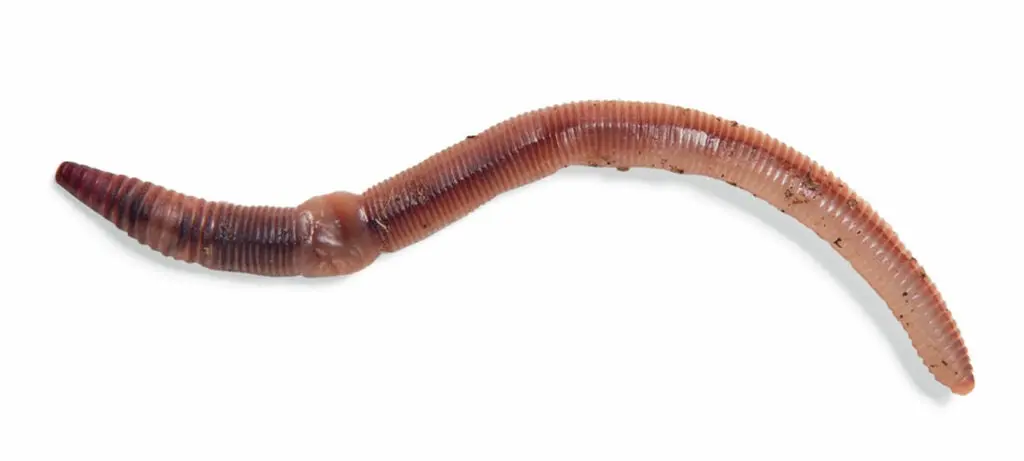
Your complete guide to the 10 best baits for freshwater fish. Ted Morrison
When you absolutely, positively have to catch a fish, live bait is the only way to go, period. While artificial lures are variously new, improved, or otherwise hyped worldwide, the lowly worm and its myriad bait-shop kin just keep quietly hauling them in. There’s both an art and a science to baitfishing, part of which involves knowing to use the right bait
in the right way at the right time. This guide matches up America’s most popular baits with our most important gamefish. You’ll catch more fish and have more fun by reaching into a bait bucket now and again—which is why this fishing is a little like the old Marvin Gaye song: “Ain’t nothing like the real thing, baby…”
Mottled Sculpin
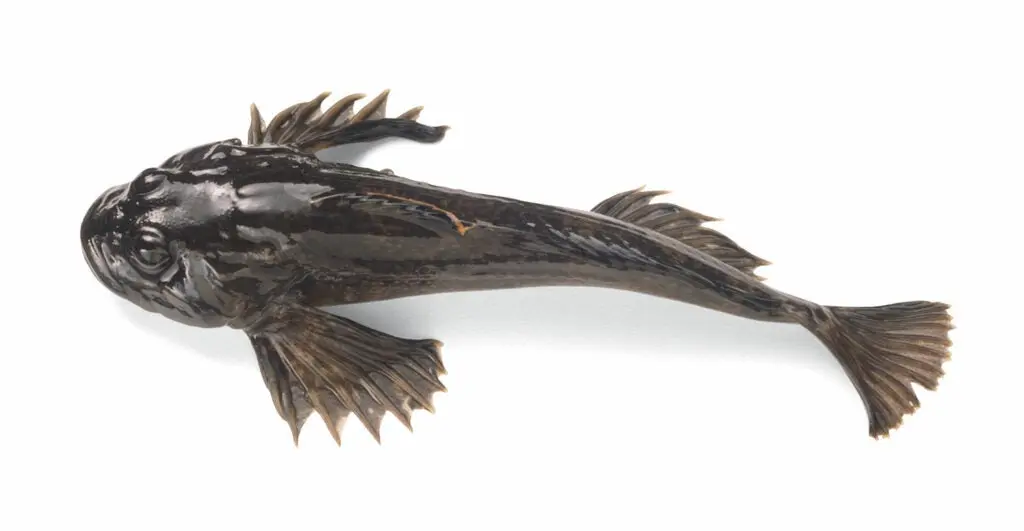
Mottled sculpin (bullhead [not a catfish], Miller’s-thumb). Bill Lindner
Target Species: Trout, smallmouth bass.
Collecting: Turn over larger rocks in fast-flowing riffles while holding a small net immediately downstream. Sculpins will be swept into the net by the current but will flip away quickly unless you grab them. They are not usually available in bait shops. Using them is illegal in some states, so check local regulations.
Storage: Most sculpins are stream fish, and long-term storage is difficult. An aerated minnow bucket will keep the bait alive for a few hours of fishing. They can also be fished as dead bait; store leftovers in the refrigerator for up to three days.
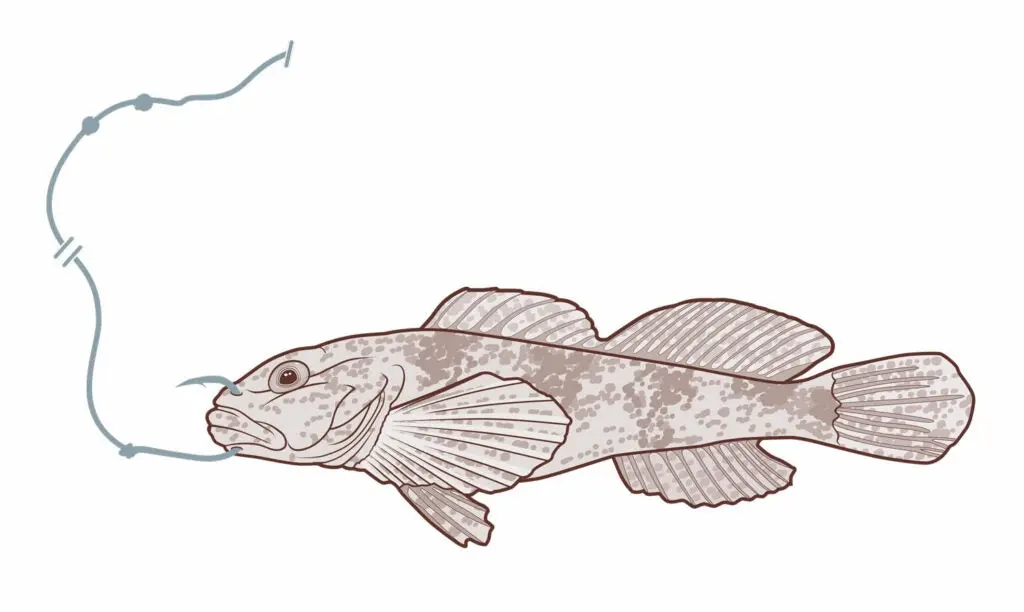
How to rig up a mottled sculpin. Dan Marsiglio
Rigging: Lively sculpins should be stunned with a light whack before fishing. Otherwise, they’ll dart under bottom rocks to hide. Hook a 3-inch sculpin through the lips with a size 4 bait hook and add enough split shot 18 inches above the hook to make the bait bump -bottom as it drifts downstream.
Tip: Fishing a freshly dead sculpin is similar to using a live one. Twitch your rod tip during a drift to give it action. You can also still-fish a dead sculpin on the bottom of a deep river hole, where it’s likely to be picked up by a brown trout.
White Sucker

White sucker (mud sucker, black mullet, white horse). Bill Lindner
Target Species: Pike, muskies.
Collecting: White suckers from 8 to 12 inches long are popular bait for pike and muskies. They’re raised commercially and best obtained from a dealer.
Storage: These moderately hardy baitfish will survive a day in your live well, or longer in a larger, well-aerated tank in your garage or basement.
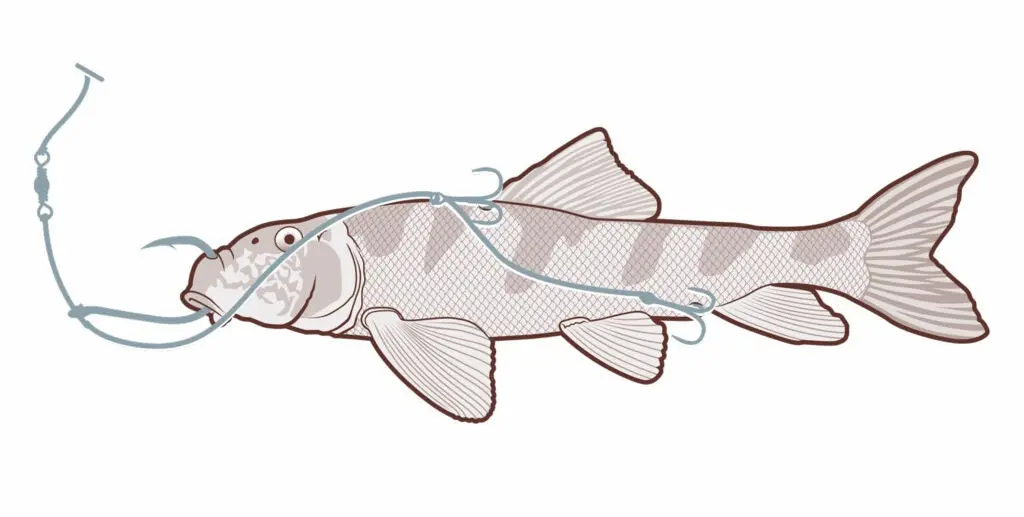
How to rig up a white sucker. Dan Marsiglio
Rigging: Big suckers have long been rigged with a single hook through the nose, but a pike or muskie has to swallow the whole bait before a hookset, which gut-hooks the fish and kills them. A quick-strike rig has multiple hooks that allow immediate hooksets and release of the fish. Usually this involves a large single hook at the nose, trailed by one or more trebles on a wire trace that attaches to the middle or rear of the sucker’s body. Pre-tied rigs are fairly inexpensive.
Tip: A hard hookset is essential with this kind of rigging because you’re trying to move multiple hooks out of a big bait and into a very large fish. Low-stretch superline helps, as does a heavy rod with lots of power in the middle and butt sections.
Fathead Minnow

Fathead minnow (tuffy, tuffie, blackhead). Bill Lindner
Target Species: Crappies, perch.
Collecting: Raised as baitfish, fatheads are inexpensive and can be found in most bait shops.
Storage: These minnows are tolerant of warm water and can be kept in any aerated bait tank.
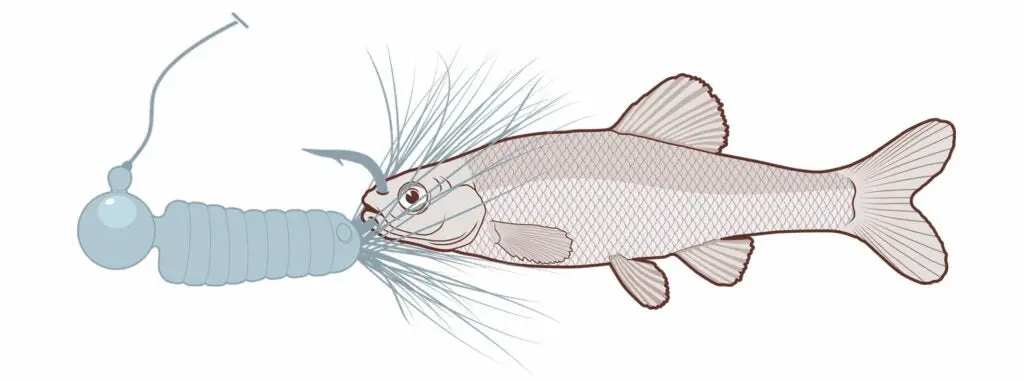
How to rig up a fathead minnow. Dan Marsiglio
Rigging: Fatheads are the favored crappie bait, partly because they are often about 2 inches long, which suits crappies perfectly. Use a light-wire size 8 or 10 hook right behind the dorsal fin (such as an Eagle Claw model 215 cricket hook), one small split shot 6 inches above the hook, and a small bobber 2 feet above the bait (adjust for depth as needed). Alternatively, hook a fathead by its lips to the back of a small crappie jig, and dip vertically without a bobber in and around brushy underwater cover.
Tip: Chumming with live fatheads will sometimes help you score with both crappies and yellow perch. The trick is to not overdo it.
Gizzard Shad
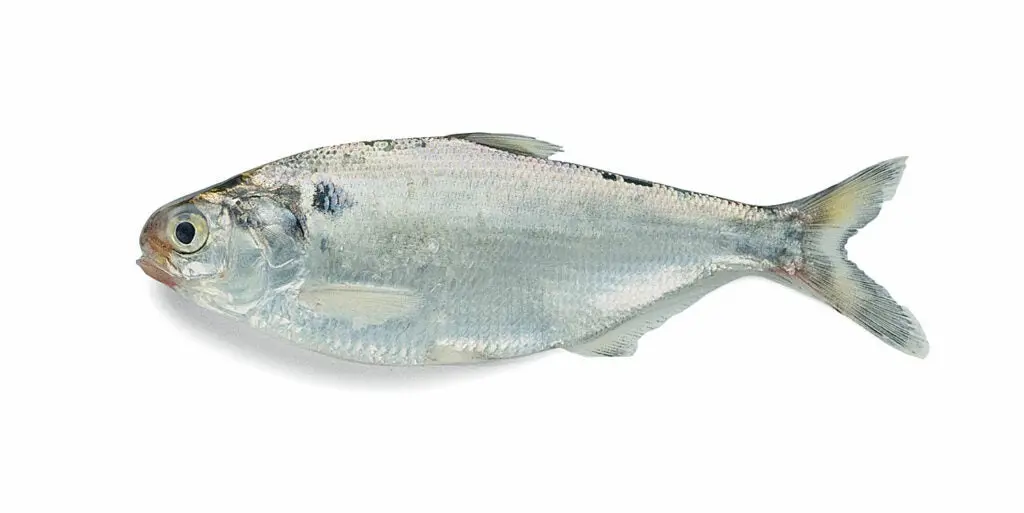
Gizzard shad (Herring). Bill Lindner
Target Species: Landlocked stripers, flathead and blue catfish.
Collecting: A common baitfish in Southern reservoirs, gizzard shad are often found in shallow, sandy, or muddy coves off main-lake channels. Small schools sometimes dimple the surface of calm water, at which time they can be taken with a cast net.
Storage: Gizzard shad are probably the hardest of all baits to keep alive and frisky, even for a short time in a boat’s live well. Their slime and scales can plug live-well filters, while their excrement further fouls the water. To combat this, replace your live-well water at least once an hour.
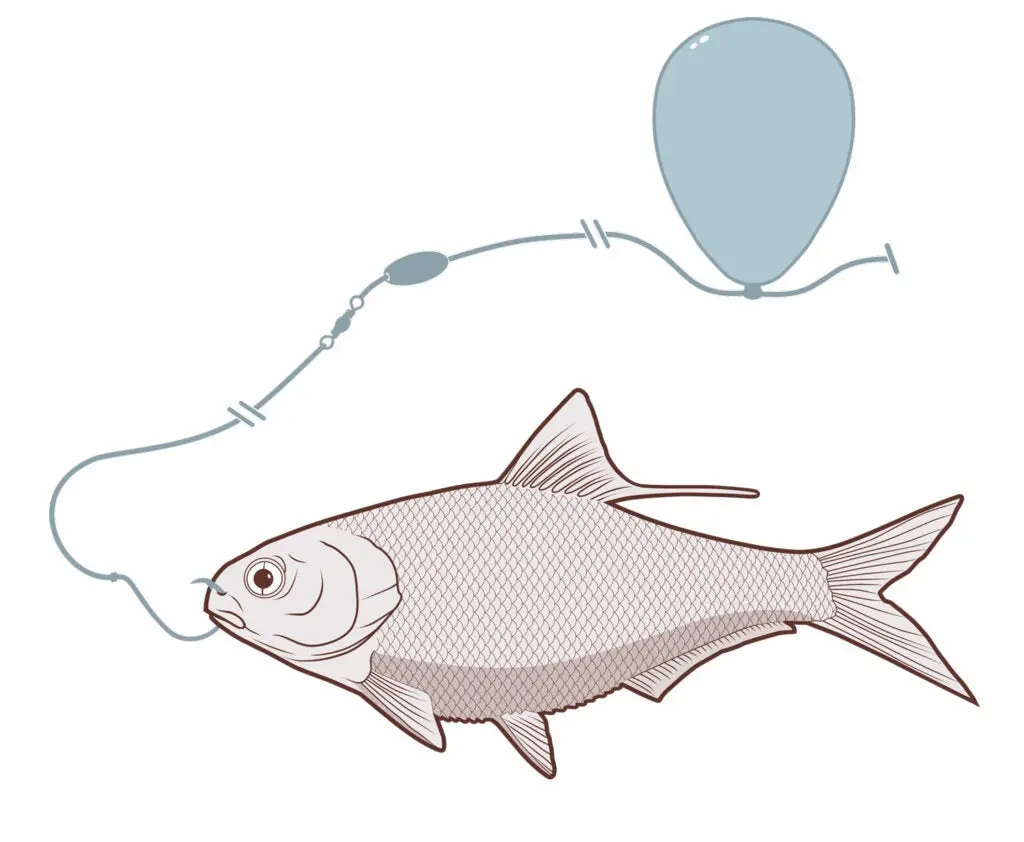
How to rig up a gizzard shad. Dan Marsiglio
Rigging: For stripers, use a 4/0 to 8/0 Octopus-style hook (depending on bait size) on a 4- to 6-foot, 40-pound-test leader, and run the point upward through the bait’s hard upper jaw in front of the eyes. Add a 1-ounce slip sinker to the main line, connect it to the leader with a barrel swivel, then loosely tie a small balloon 10 to 30 feet above, as a float. You can also use cutbait or shad chunks, especially for blue cats.
Tip: When you’re fishing multiple baited lines from a boat, get one line 10 to 15 feet deeper than the others, as the biggest stripers hang below groups of smaller fish.
Earthworm
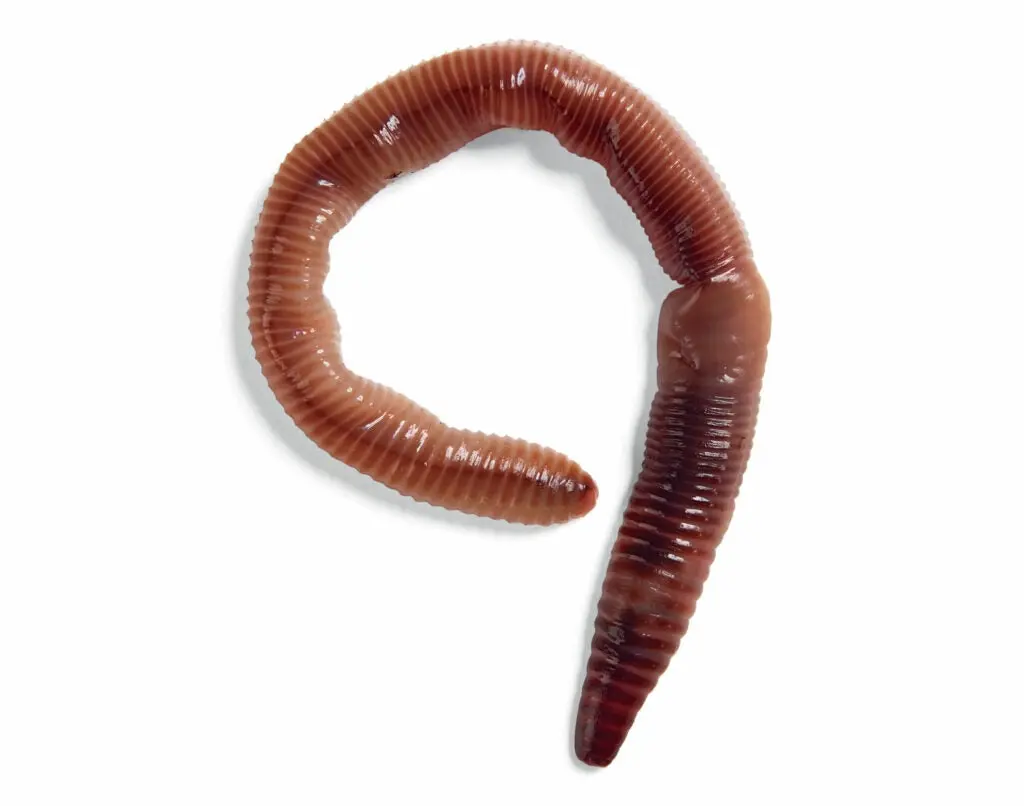
Earthworm (garden hackle, gardenworm, nightcrawler, dilly). Ted Morrison
Target Species: Trout, bass, walleyes, panfish, catfish.
Collecting: Smaller garden worms are easily dug from almost any fertile, moist soil. Nightcrawlers
, true to their name, come out in the dark. Spot them with a flashlight, then grab them before they retreat into their holes.
Storage: Make worm bedding with soil and shredded newspaper. Keep slightly moist in a plastic tub, preferably in a cool basement or garage. Feed worms small amounts of vegetable waste, such as torn-up lettuce leaves.

How to rig up a worm. Dan Marsiglio
Rigging: For most fish most of the time, thread a worm on a standard-length J-style hook so both ends of the worm are dangling and can wiggle freely. Match worm size, hook size, and other rigging to your quarry. When I fish for brook trout in creeks, I like a slim, 3-inch garden worm on a size 8 hook with one small split shot a foot above the bait. For big brown trout in rivers, I use a whole nightcrawler, 6 inches or longer, hooked once near the head on a size 4 hook and with enough split shot to keep it drifting slowly along the bottom.
Tip: Although plastic baits dominate bass fishing, real worms still work great. A big nightcrawler can be Texas-rigged, wacky-rigged, fished on a jig, or hung under a bobber. Live worms are, of course, more fragile than soft plastics, but their action and scent can’t be beat.
Leopard Frog
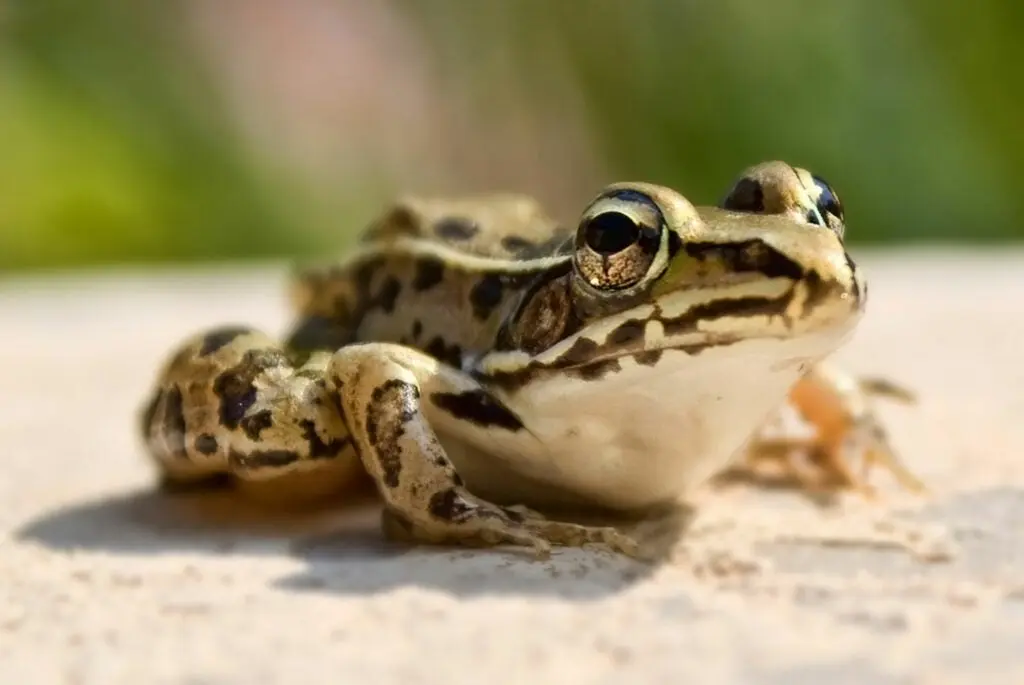
Leopard frog (kermit). Courtesy Andy McLemore/Flickr
Target Species: Bass.
Collecting: You can buy leopard frogs from some commercial bait dealers, or catch your own in moist grassy areas around ponds and streams. Possession and use as bait may be regulated in some areas, so check local rules. Smaller frogs, around 2 inches long, work best.
Storage: Store frogs in a minnow bucket partly filled with wet grass and kept in the shade.
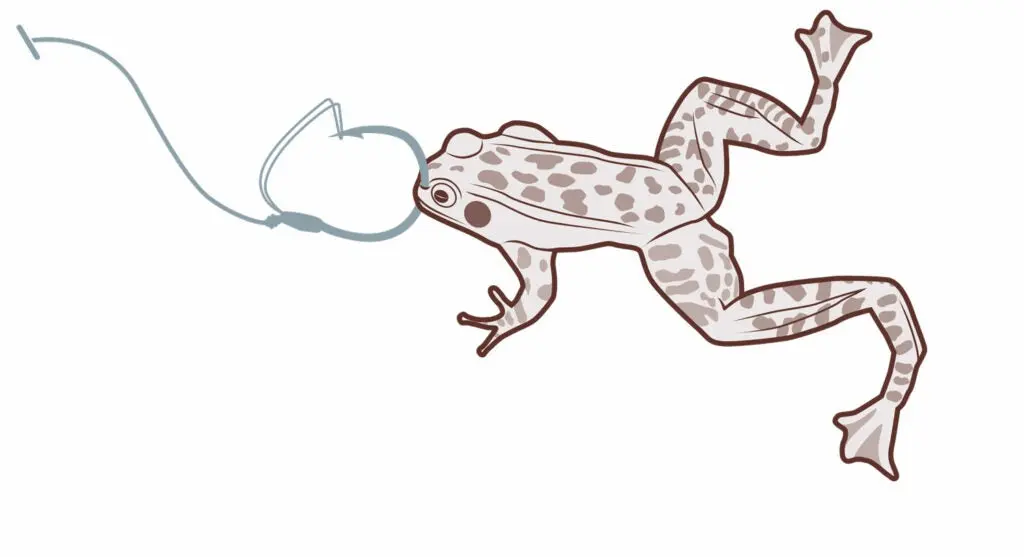
How to rig up a frog. Dan Marsiglio
Rigging: Live frogs as bass bait have largely been replaced by soft-plastic versions, but the real things still work better and should be rigged in one of two ways. Use a size 4 Gamakatsu Weedless Finesse wide-gap hook. For surface fishing in weedy cover, hook the frog through the front lips. That allows you to tease the bait through weeds with a minimum of tangles. To fish deeper, hook the frog in a rear leg, allowing it to swim downward, and add split shot to the line as needed for depth.
Tip: Izaak Walton wrote an elaborate description of how to tie hooks to a live frog bait. In concluding, he said to use your frog “as though you loved him.” Fishing a fragile bait gently is still good advice.
Cricket

Cricket (field cricket, black cricket, jiminy). Ted Fauceglia
Target Species: Panfish, trout.
Collecting: Common black crickets are widely sold by bait dealers but are also easy to catch. Mix small pieces of bread with a little sugar and place them under newspaper pages at the edge of a lawn, field, or brushy area in late afternoon. Come back early in the morning, lift up the papers, and grab the crickets.
Storage: Keep crickets in an aquarium, bucket, or other container with a tight-fitting screen top. Put a couple of inches of soil in the bottom, followed by an inch or two of grass clippings or hay. A dish of water and a bit of dry dog food will keep them happy.

How to rig up a cricket. Dan Marsiglio
Rigging: Use a light-wire hook to avoid damaging the bait. A size 6 or 8 Eagle Claw model 215 cricket hook works well. Pass the hook point under the cricket’s collar right behind the head, add a small split shot 6 inches above the bait, and fish it 3 feet under a bobber.
Tip: Crickets are lively and hard to handle. A cricket container allows you to grab one bait without having all the others escape.
Golden Shiner
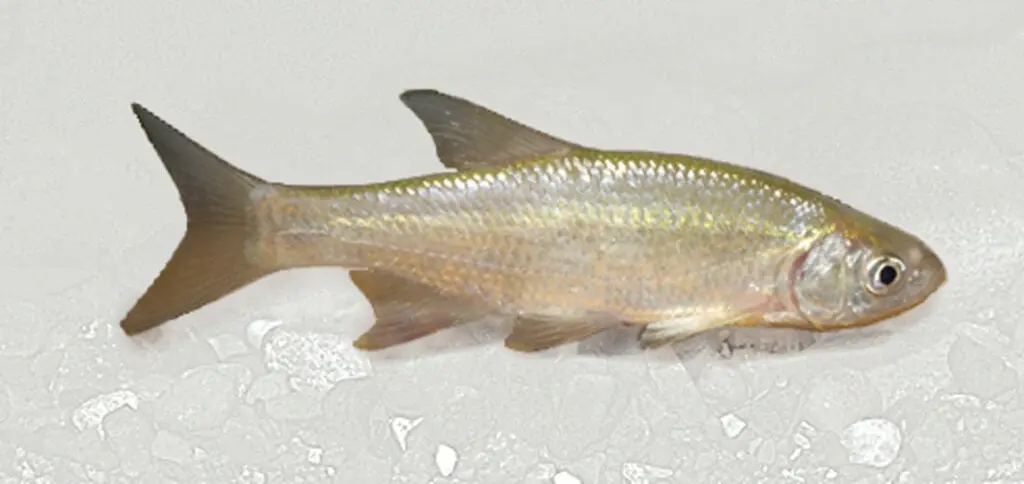
Golden shiner (golden, American roach). Ted Fauceglia
Target Species: Largemouth bass.
Collecting: Goldens are raised for sale as bait, but wild shiners are preferable for big bass. Wild baits act naturally afraid when bass approach and are more likely to trigger a strike. Some bait dealers stock wild shiners, but they can cost $18 a dozen. Catch your own by baiting a shallow weeded area with cereal, returning to fish with a small bread wad on a size 10 hook.
Storage: Goldens are fragile and difficult to keep for long without having your own pond or a large and well-aerated tank. In general, buy or catch no more than what you need for a day.
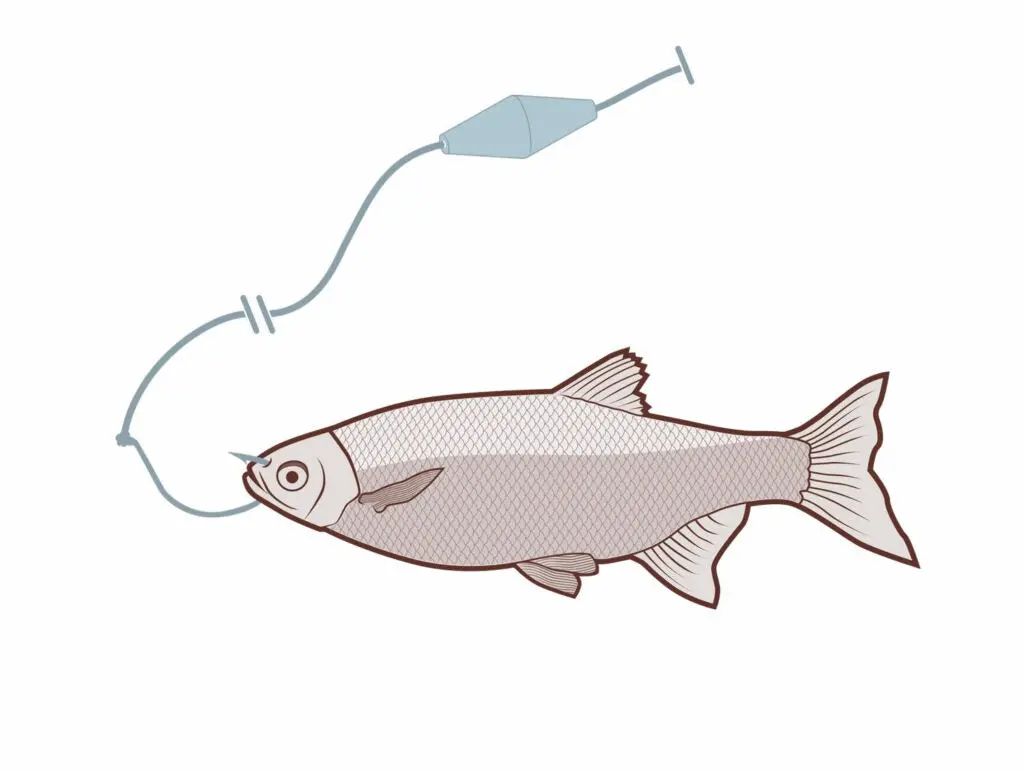
How to rig up a golden shiner. Dan Marsiglio
Rigging: These big baits are typically used for large fish and require stout tackle. Thread a 4-inch perch-style float (tapered at both ends) onto 20- to 25-pound-test mono, and peg the float to keep it 30 inches above the hook. Using a size 4/0 Kahle-style hook, run the point from under the front jaw up and out in front of the eyes. Still-fish or slowly troll on the surface.
Tip: Remove the bobber and hook the shiner behind the dorsal fin to make it swim downward, a good trick for fishing deep cover.
Crayfish

Crayfish (crawdad, mudbug, crawfish). Bill Lindner
Target Species: Trout, bass.
Collecting: You can catch crayfish
by turning over rocks in shallow water along a lakeshore or slow-moving stream. Use an open-ended coffee can or net to trap them.
Storage: Short-term storage in a lidded bucket of pond or river water is fine. An aerated tank is necessary if you want to keep them for more than a few days.
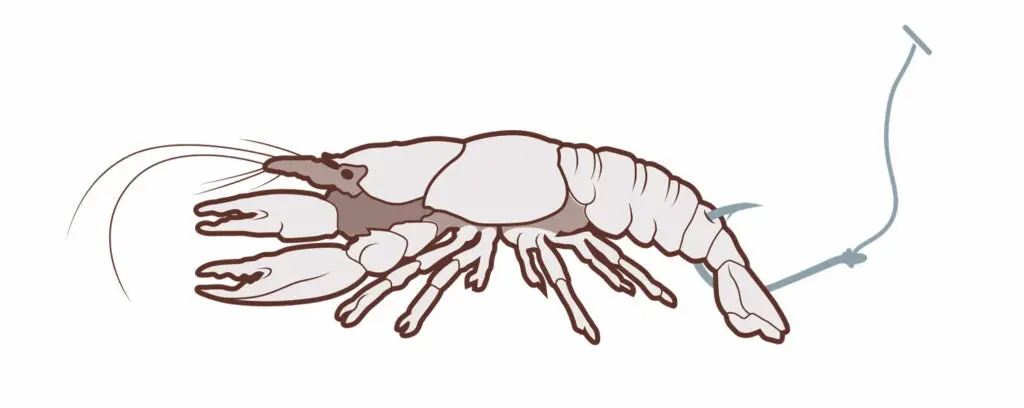
How to rig up a crayfish. Dan Marsiglio
Rigging: Hook a size 2 or 4 bait hook from bottom to top near the end of the crayfish’s tail. Make sure the point is on top to avoid snagging bottom rocks. Fish in shallow water without added weight, or put split shot on the line to gain depth as needed. Some fishermen remove the bait’s claws for vulnerability, but I’m not sure that’s an improvement.
Tip: A fresh crayfish tail can sometimes work as effectively as a whole live bait, especially in trout and smallmouth bass streams. Twist off the tail and crack the shell, then carefully remove the meat in one piece. Use that to bait your hook, add split shot, then drift it slowly along the bottom.
Ribbon Leech
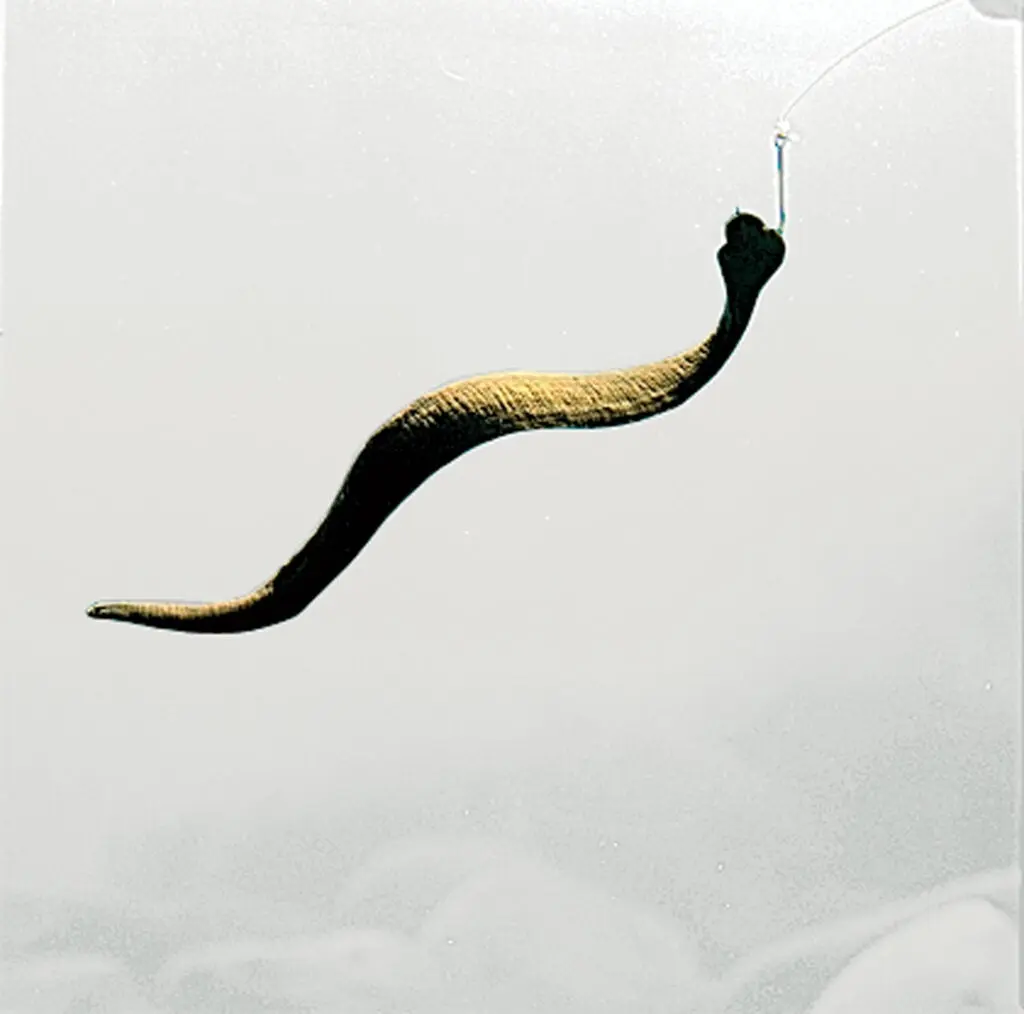
Ribbon leech (walleye leech). Bill Lindner
Target Species: Walleyes, bass, panfish.
Collecting: Leeches are generally available in Midwestern bait shops from spring through early summer. To catch your own, place bits of fresh liver into a coffee can, bend or crimp the opening almost shut, then sink it on its side overnight in the muddy shallows of a pond. In the morning, you should have a day’s supply.
Storage: Ribbon leeches will keep for a few days in a container of pond water in your refrigerator. Warn your family first.
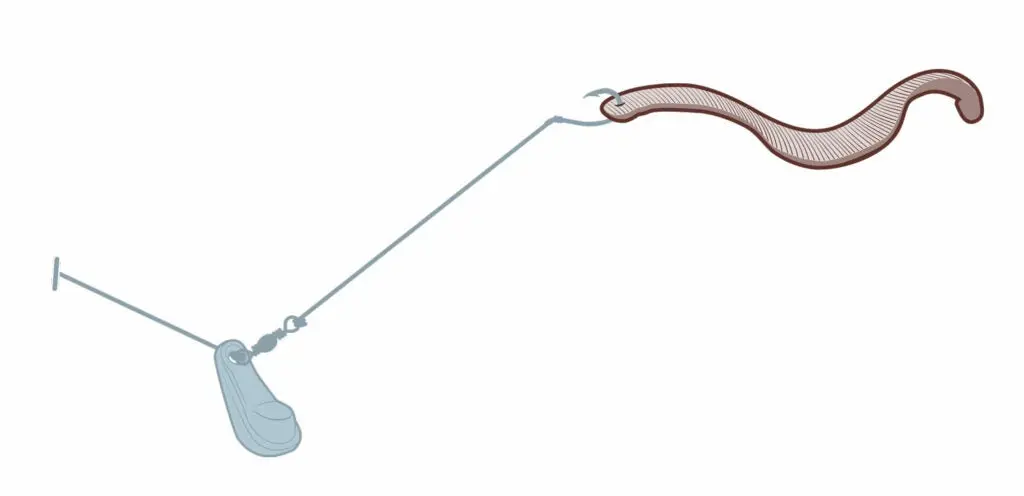
How to rig up a leech. Dan Marsiglio
Rigging: When walleyes move to deeper reefs in early summer, try a Lindy-rigged leech. Thread a 3⁄8-ounce walking-style sinker onto your main line, making sure that its concave part faces the end of the line, then tie on a small barrel swivel to keep the sinker from sliding all the way down. Add a 30-inch section of 8-pound mono or fluorocarbon line to the other end of the swivel and fasten a short-shanked size 6 hook to the end of the leader. Bait with a leech and cast or drift the rig so it slowly and gently bumps bottom rocks.
Tip: Hook the leech through the fat end, or tail, which causes the leech to extend and wiggle outward from the hook. A leech hooked at the smaller head end tends to ball up on the hook and won’t attract fish.






